Related Research Articles

Dagome iudex is one of the earliest historical documents relating to Poland. Although Poland is not mentioned by name, it refers to Dagome and Ote and their sons in 991, placing their land under the protection of the Apostolic See. The document's name derives from its opening words.

Charles IV, also known as Charles of Luxembourg, born Wenceslaus, was Holy Roman Emperor from 1355 until his death in 1378. He was elected King of Germany in 1346 and became King of Bohemia that same year. He was a member of the House of Luxembourg from his father's side and the Bohemian House of Přemyslid from his mother's side; he emphasized the latter due to his lifelong affinity for the Bohemian side of his inheritance, and also because his direct ancestors in the Přemyslid line included two saints.
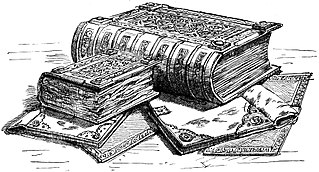
Domesday Book is a manuscript record of the Great Survey of much of England and parts of Wales completed in 1086 at the behest of King William the Conqueror. The manuscript was originally known by the Latin name Liber de Wintonia, meaning "Book of Winchester", where it was originally kept in the royal treasury. The Anglo-Saxon Chronicle states that in 1085 the king sent his agents to survey every shire in England, to list his holdings and dues owed to him.
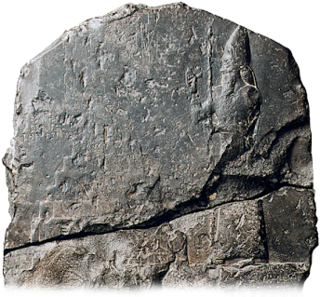
Nebuchadnezzar II, also spelled Nebuchadrezzar II, was the second Neo-Babylonian emperor, ruling from the death of his father Nabopolassar in 605 BC to his own death in 562 BC. Historically known as Nebuchadnezzar the Great, he is typically regarded as the empire's greatest king. Nebuchadnezzar remains famous for his military campaigns in the Levant, for his construction projects in his capital, Babylon, including the Hanging Gardens of Babylon, and for the role he plays in Jewish history. Ruling for 43 years, Nebuchadnezzar was the longest-reigning king of the Babylonian dynasty. By the time of his death, he was among the most powerful rulers in the world.
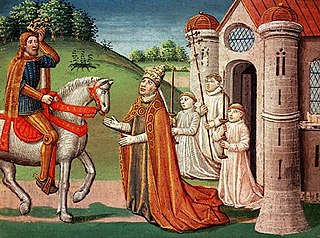
Charles is a masculine given name predominantly found in English and French speaking countries. It is from the French form Charles of the Proto-Germanic name ᚲᚨᚱᛁᛚᚨᛉ or *karilaz, whose meaning was "free man". The Old English descendant of this word was Ċearl or Ċeorl, as the name of King Cearl of Mercia, that disappeared after the Norman conquest of England.

A fief was a central element in medieval contracts based on feudal law. It consisted of a form of property holding or other rights granted by an overlord to a vassal, who held it in fealty or "in fee" in return for a form of feudal allegiance, services or payments. The fees were often lands, land revenue or revenue-producing real property like a watermill, held in feudal land tenure: these are typically known as fiefs or fiefdoms. However, not only land but anything of value could be held in fee, including governmental office, rights of exploitation such as hunting, fishing or felling trees, monopolies in trade, money rents and tax farms. There never existed a standard feudal system, nor did there exist only one type of fief. Over the ages, depending on the region, there was a broad variety of customs using the same basic legal principles in many variations.

The County of Hainaut, sometimes spelled Hainault, was a territorial lordship within the medieval Holy Roman Empire that straddled the present-day border of Belgium and France. Its most important towns included Mons, now in Belgium, and Valenciennes, now in France.

The Kingdom of Croatia entered a personal union with the Kingdom of Hungary in 1102, after a period of rule of kings from the Trpimirović and Svetoslavić dynasties and a succession crisis following the death of king Demetrius Zvonimir. With the coronation of King Coloman of Hungary as "King of Croatia and Dalmatia" in 1102 in Biograd, the realm passed to the Árpád dynasty until 1301, when the (male) line of the dynasty died out. Then, kings from the Capetian House of Anjou, who were also cognatic descendants of the Árpád kings, ruled the kingdoms. Later centuries were characterized by conflicts with the Mongols, who sacked Zagreb in 1242, competition with Venice for control over Dalmatian coastal cities, and internal warfare among Croatian nobility. Various individuals emerged during the period, such as Paul I Šubić of Bribir, who was representing the most powerful Croatian dynasty at the time, the Šubić noble family. These powerful individuals were on occasion able to de facto secure great deal of independence for their fiefdoms. The Ottoman incursion into Europe in the 16th century significantly reduced Croatian territories and left the country weak and divided. After the death of Louis II in 1526 during the Battle of Mohács and a brief period of dynastic dispute, both crowns passed to the Austrian House of Habsburg, and the realms became part of the Habsburg monarchy.

A county is the name of a type of administrative unit in Hungary.

Princess is a title used by a female member of a monarch's family or by a female ruler. The male equivalent is a prince. Most often, the term has been used for the consort of a prince, or for the daughter of a monarch. A crown princess can be the heiress apparent to the throne or the spouse of the heir apparent.
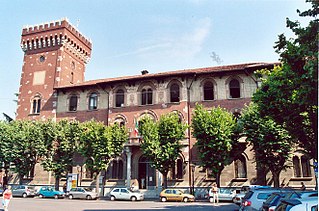
Rho is a town and comune (municipality) in the Metropolitan City of Milan in the Italian region of Lombardy, located about 14 kilometres northwest of Milan. The language spoken in Rho is Italian.
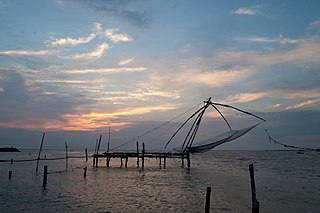
Fort Kochi, also known by its former name Fort Cochin is a neighbourhood of Cochin (Kochi) city in Kerala, India. Fort Kochi takes its name from the Fort Manuel of Cochin, the first European fort on Indian soil, controlled by the Portuguese East Indies. This is part of a handful of water-bound islands and islets toward the south-west of the mainland Kochi, and collectively known as Old Cochin or West Cochin. Adjacent to this is the locality of Mattancherry. In 1967, these three municipalities along with a few adjoining areas, were amalgamated to form the Kochi Municipal Corporation.
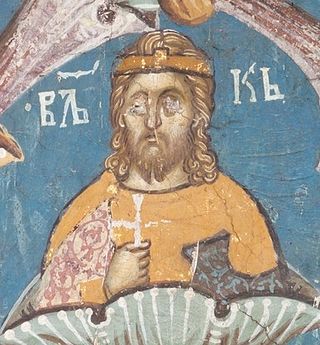
Vukan Nemanjić was the Grand Prince of the Grand Principality of Serbia from 1202 to 1204. He was the Grand Prince of Pomorje from 1195 until his death. He was the eldest, but his father had instead chosen his younger brother Stefan as heir, as soon as his father died, he plotted against his brother, Stefan Nemanjić, and took the throne by force, in a coup assisted by the Kingdom of Hungary. He was defeated two years later, and was pardoned by his third brother, who became Saint Sava, and he continued to rule his appanage of Zeta unpunished.

In ancient Rome, the Latin word pagus was an administrative term designating a rural subdivision of a tribal territory, which included individual farms, villages, and strongholds serving as refuges, as well as an early medieval geographical term. From the reign of Diocletian onwards, the pagus referred to the smallest administrative unit of a province. These geographical units were used to describe territories in the Merovingian and Carolingian periods, without any political or administrative meaning.
Naso is a town and comune in northeastern Sicily, Italy, administratively part of the Metropolitan City of Messina. As of 2011, it had a population of 4,070.

Helen of Anjou was the queen consort of the Serbian Kingdom, as the spouse of King Stefan Uroš I, who ruled from 1243 to 1276. Their sons were later Serbian kings Stefan Dragutin (1276–1282) and Stefan Milutin (1282–1321). As a dowager-queen, she held the provincial governorship in the regions of Zeta and Travunija. She built Gradac Monastery and was known for her religious tolerance. She is revered as a saint by the Serbian Orthodox Church. Her relics, however, are now lost.
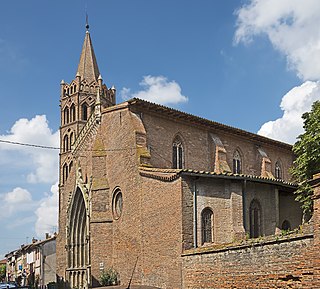
Grenade, also referred to as Grenade-sur-Garonne, is a commune in the Haute-Garonne department in southwestern France.

The Book of Fees is the colloquial title of a modern edition, transcript, rearrangement and enhancement of the medieval Liber Feodorum which is a listing of feudal landholdings or fief, compiled in about 1302, but from earlier records, for the use of the English Exchequer. Originally in two volumes of parchment, the Liber Feodorum is a collection of about 500 written brief notes made between 1198 and 1292 concerning fiefs held in capite or in-chief, that is to say directly from the Crown.
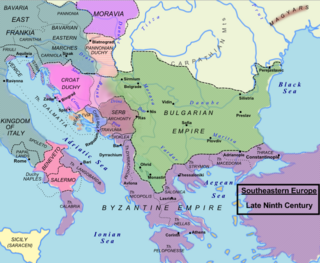
The Duchy of Croatia was a medieval state that was established by White Croats who migrated into the area of the former Roman province of Dalmatia c. 7th century CE. Throughout its existence the Duchy had several seats – namely, Klis, Solin, Knin, Bijaći and Nin. It comprised the littoral – the coastal part of today's Croatia – except Istria, and included a large part of the mountainous hinterland as well. The Duchy was in the center of competition between the Carolingian Empire and the Byzantine Empire for rule over the area. Croatian rivalry with Venice emerged in the first decades of the 9th century and would continue through the following centuries. Croatia also waged battles with the Bulgarian Empire and with the Arabs; it also sought to extend its control over important coastal cities under the rule of Byzantium. Croatia experienced periods of vassalage to the Franks or to the Byzantines and of de facto independence until 879, when Duke Branimir was recognized as an independent ruler by Pope John VIII. The Duchy was ruled by the Trpimirović and Domagojević dynasties from 845 to 1091. Around 925, during the rule of Tomislav, Croatia became a kingdom.
References
- ↑ Souter, Alexander (1949). A Glossary of Later Latin. Oxford: Clarendon Press.